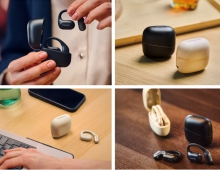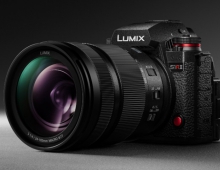
New Technology Estimates Maximum Acceptable Sound Volume Of Hearing Aids Using Brain Wave Patterns
Panasonic today announced the development of a new technology that enables to objectively estimate acceptable maximum sound volume of hearing aids.
Focusing on electroencephalogram (EEG) brain wave patterns recorded when example sounds heard at the normal sound volume are played into the user's ears during the test, the new technology enables to estimate the loudest level of sound the user can comfortably tolerate. This development allows for reducing the strain on the users and the time required to fit hearing aids. Panasonic aim to put the new technology into practice as an automatic volume level fitting system for hearing aids in the fiscal year starting April 2015.
The perception of loudness differs from person to person and the acceptable sound volume limit depends on each person. Hearing aids must meet with such different needs and desires. The maximum sound volume is an important key factor for hearing aid fitting. The conventional method for adjusting volumes in the hearing aid fitting process uses the minimum volume hearing threshold level to calculate the maximum sound level. Because the results contain a large margin of error without factoring in individual differences, users need to go through an uncomfortable loudness test, causing them psychological stress and fatigue. Repeated listening to test tones can also be confusing to them. Therefore, it is difficult to precisely adjust the volume parameter of hearing aids to the true hearing ability for each user.
Using the new method, the maximum volume level for each user can be estimated objectively based on the EEG response to auditory stimuli, normal volume sound, in a short time and with a high degree of accuracy. This method enables to set the hearing aid more accurately in the maximum volume and use more comfortably.
Panasonic's technology has the following features.
- Highly accurate estimation (a margin of error is +/-5 dB) of the acceptable maximum volume level is made based on the EEG pattern analyzing technology to auditory stimuli (pure tones) developed by Panasonic.
- Hearing examination can be finished in a short time, within five minutes or so.
- This method avoids the habituation to the auditory stimuli, so that the results are more objective without subjective response of the user.
- This method enables to reduce physical strain on the users, because the auditory stimuli use normal sounds heard in everyday life.
A part of this technology was presented in the 41st Annual meeting of Japanese Society of Clinical Neurophysiology, held in Shizuoka Prefecture, on November 11, 2011.
The perception of loudness differs from person to person and the acceptable sound volume limit depends on each person. Hearing aids must meet with such different needs and desires. The maximum sound volume is an important key factor for hearing aid fitting. The conventional method for adjusting volumes in the hearing aid fitting process uses the minimum volume hearing threshold level to calculate the maximum sound level. Because the results contain a large margin of error without factoring in individual differences, users need to go through an uncomfortable loudness test, causing them psychological stress and fatigue. Repeated listening to test tones can also be confusing to them. Therefore, it is difficult to precisely adjust the volume parameter of hearing aids to the true hearing ability for each user.
Using the new method, the maximum volume level for each user can be estimated objectively based on the EEG response to auditory stimuli, normal volume sound, in a short time and with a high degree of accuracy. This method enables to set the hearing aid more accurately in the maximum volume and use more comfortably.
Panasonic's technology has the following features.
- Highly accurate estimation (a margin of error is +/-5 dB) of the acceptable maximum volume level is made based on the EEG pattern analyzing technology to auditory stimuli (pure tones) developed by Panasonic.
- Hearing examination can be finished in a short time, within five minutes or so.
- This method avoids the habituation to the auditory stimuli, so that the results are more objective without subjective response of the user.
- This method enables to reduce physical strain on the users, because the auditory stimuli use normal sounds heard in everyday life.
A part of this technology was presented in the 41st Annual meeting of Japanese Society of Clinical Neurophysiology, held in Shizuoka Prefecture, on November 11, 2011.





















